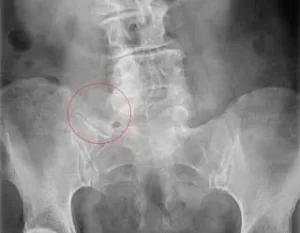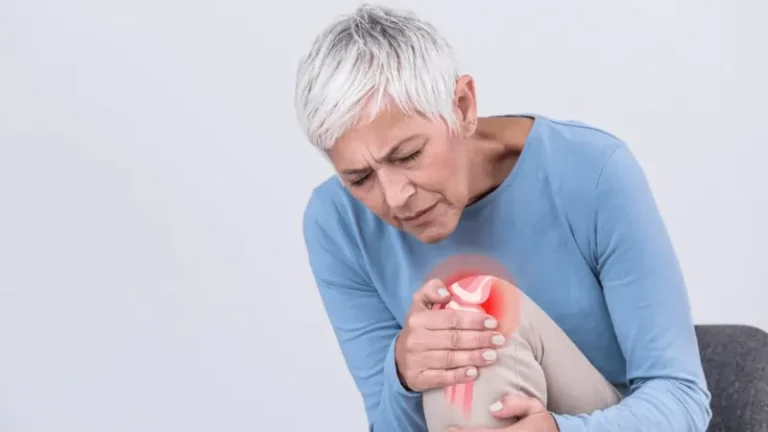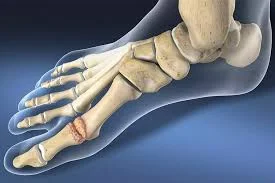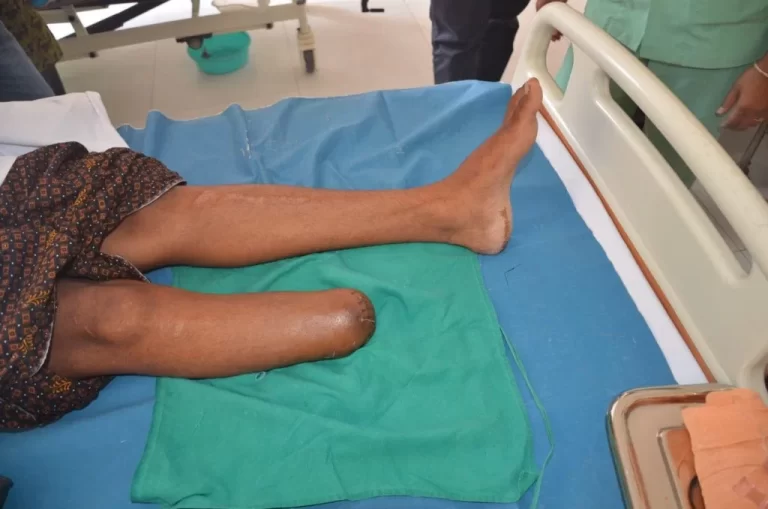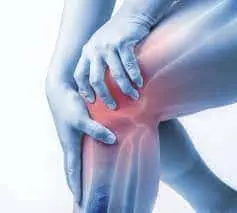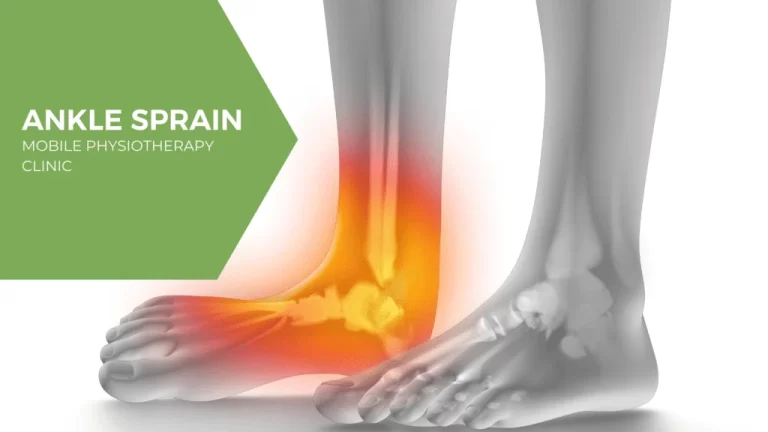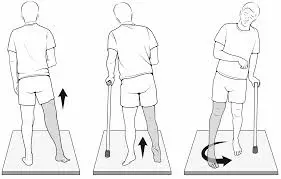Bertolotti Syndrome
Bertolotti Syndrome: what is it?
Bertolotti Syndrome is a condition characterized by the presence of a congenital anomaly known as a lumbosacral transitional vertebra (LSTV). This condition occurs when there is an abnormality in the development of the lumbosacral junction, where the lumbar spine meets the sacrum.
Four to eight percent of people may have Bertolotti syndrome, according to a 2023 literature study. Nevertheless, some specialists think the true prevalence may be higher and that the illness is underdiagnosed.
The 33 little bones that together makeup vertebrae, which are found in the spine, are divided into five sections. The portion of the sacrum, which connects the pelvis at the very base of the spine, helps the body withstand weight coming from the upper body.
Medical professionals refer to the partial or complete fusion of the sacrum with the lowest lumbar vertebrae (L5) as Bertolotti syndrome. Both or just one of the bony segments surrounding the vertebrae may enlarge, causing this.
Those L5 vertebrae may fuse with the sacrum if one or both of the bony segments at their sides mature.
Added to that, Bertolotti syndrome could have been associated with a larger range of motion in the vertebrae above L5. The subsequent factors may cause the disc that absorbs the gap between the vertebrae to degenerate more, raising the risk of a slipped disc.
What Are the Bertolotti’s Syndrome Causes?
The cause of Bertolotti syndrome is yet unknown. The discovery of lumbosacral transitional vertebrae in multiple family members may have a hereditary component. It is believed that aberrant LSTV originates from the HOX10/HOX11 molecules. The vertebral column is divided into multiple levels by HOX genes, also referred to as homeobox genes.
Plus, the distribution of an individual’s body weight among the SI joints is one biomechanical element that affects the establishment of the lumbosacral junction. The currently known etiology of Bertolotti syndrome is thought to be complex and needs more research.
The particular reasons consist of:
- Congenital Anomaly
- Altered Biomechanics
- Nerve Compression
- Degenerative Changes
What symptoms does Bertolotti’s syndrome present with?
Regarding Bertolotti’s disease, the degree of inflammation in the lumbosacral transitional vertebral (LSTV) and the severity of associated issues may affect the symptoms. Common indications and symptoms include:
Reduce Backache: Chronic, ongoing lower back ache accounts for the most common symptoms. The interface around the lumbosacral joint is where discomfort is most frequently experienced.
Characteristics similar to sciatica: Some people may have pain that radiates down their legs and buttocks from their lower back. This occurs when the surrounding nerves are compressed or irritated by the malformation.
Decreased Adaptability and Range of Motion: The abnormal spine’s structure and mechanics might result in a rigid lower back with little range of motion.
Pain During Physical Activity: Certain physical activities, such as lifting, twisting, or bending, have the potential to exacerbate pain. Prolonged standing or sitting might sometimes make symptoms worse.
An uneven pain distribution: Because of the unique form of the transitional vertebra and how it interacts with the surrounding tissues, one side of the lower back or buttocks may feel more pain than the other.
Muscle spasms: For some people, lower back muscle spasms might make their back pain and suffering worse.
Intermittent Pain: This kind of pain can fluctuate in intensity and can develop worse in reaction to specific motions or postures.
Bertolotti’s Syndrome can be misdiagnosed by imaging testing for various reasons when a patient has no symptoms at all. However, when symptoms do appear, they can significantly impact daily functioning and necessitate medical care.
Epidemiology as a field of study:
It has been determined that four to eight percent of the population in its entirety suffers from Bertolotti syndrome. On the other hand, an LSTV is far more common and can range from 4% to 30%.
Many experts believe that this disparity has resulted in a significant underdiagnosis of Bertolotti syndrome. Despite this variation, men are over twice as likely as women to have an LSTV that is connected to discomfort.
Pathophysiology of Bertolotti’s Syndrome:
In addition to an LSTV, which can be unpleasant, another person with the Bertolotti phenomenon may also have abnormal lumbosacral junction architecture and mobility.
Bertolotti syndrome could be brought on by a single iliolumbar ligament defect. The iliolumbar ligament aids in maintaining the stability of the spinal column in a normally functioning, anatomically normal spine. A new study shows that the iliolumbar ligament, which is located on the side of the aberrant articulation in patients with Bertolotti syndrome, is considerably underdeveloped compared to its contralateral counterpart.
Although two associated causes of pain and lumbar radiculopathy might complicate the clinical picture, transitional articulation may appear to be the main source of pain. It has been discovered that the existence of an LSTV is connected to disc herniations and facet joint degradation at the spinal level above the LSTV.
The disc immediately above the transitional segment, most likely L5-S1, has often degraded at considerably higher rates than the disc between the sacrum and the transitional vertebra.
People with Bertolotti syndrome often have intervertebral foramen stenosis, probably caused by degenerative changes at the facet joints above the long sagittal plane.
Diagnosis of Bertolotti’s Syndrome:
History
Despite being frequently reported by people with Bertolotti syndrome, back discomfort is sometimes confused with other types of pain. A specific examination is required to ascertain whether the patient is simultaneously experiencing radicular, sacroiliac, facet, or other forms of back pain.
Physical Inspection
When someone is suspected of having Bertolotti syndrome, they should thoroughly examine their spine to rule out other conditions such as lumbar spondylosis, neurogenic claudication, degenerative disc degeneration, and lumbar radiculopathy. During a physical examination, there may be painful regions to the touch or non-specific discomfort. They can also have a limited range of motion in the workplace. Provocation movements, reflexes, sensibility, and muscular strength should all be carefully evaluated to rule out alternative neurological causes of pain.
Evaluation
A physician will use radiography, a form of X-ray imaging, to evaluate the lumbar spine and pelvis to precisely diagnose Bertolotti syndrome. In most cases, this should give them enough details to identify the problem, if one exists.
Additionally, a physician may elect to perform additional imaging tests, including a CT scan. As a result, they will be better equipped to determine the extent of fusion between the sacrum and lower vertebrae.
Medical practitioners can determine whether Bertolotti syndrome is the underlying cause of other disorders by performing an MRI scan. Degeneration of the cartilage between the vertebrae may be one of these.
When creating treatment plans, physicians can gain a better understanding of a patient’s spine by combining CT and MRI imaging.
When to visit a physician:
There are numerous conditions that can result in chronic lower back pain, including Bertolotti syndrome. Therefore, anyone who has chronic lower back discomfort needs to think about making an appointment with a physician. To assist in identifying the underlying reason, they might do tests.
It may be necessary for other sections of the spine to support the entire weight of the upper body if treatment for Bertolotti syndrome is unsuccessful. This can overstress the spine and result in disc rupture or degeneration of the intervertebral cartilage.
Through early detection and treatment, an individual might acquire techniques to lessen the probability of future issues. A physician might advise physical therapy, prophylactic stretches, and sustaining particular levels of physical exercise, for instance.
Chronic pain needs to be decreased to treat Bertolotti syndrome appropriately and prevent future issues.
Bertolotti’s Syndrome Treatment:
Adjusting one’s lifestyle to include regular rotation and extension might lessen the burden on the spine’s injured sections.
OTC pain relievers such as Aleve, Advil, or Tylenol. The use of local anesthesia and occasionally corticosteroid injections are used under fluoroscopic guidance to minimize swelling along the afflicted nerves or directly into the pseudo-joint. Another diagnostic tool that is available is fluoroscopy.
An injection known as platelet-rich plasma (PRP) therapy is used to reduce pain and inflammation and aid in the repair of broken joints. It is administered under fluoroscopic supervision.
As a part of heat therapy, apply hot packs to relieve discomfort.
Short Wave Diathermy (SWD) is the modality. Therapy that Interferential (IFT)
A different kind of treatment known as prolotherapy involves injecting dextrose plus a strong local anesthetic into the afflicted area. area where the body’s innate capacity for self-healing might be strengthened.
Through exercise treatment, certain parts can be made stronger and their range of motion increased.
Conservative techniques:
The main course of medication for Bertolotti disorders must involve conservative measures. Nonsteroidal anti-inflammatory medications are generally well accepted, provide substantial relief, and are reasonably priced.
At the time of diagnosis, physical therapy (PT) may also be recommended. Treatments aimed at improving spinal mobility, strengthening core muscles, and providing additional pain relief methods may be included in PT. If the patient’s symptoms are not alleviated by NSAIDs and physical therapy, an injectable treatment plan could be recommended. Under fluoroscopic supervision, directed corticosteroid injections into the aberrant articulation can effectively relieve discomfort and provide long-lasting relief.
In addition to helping determine the origin of a patient’s pain and offering advice for effective management, injection treatment also has the potential to provide therapeutic effects.
The only patients who have surgery are those who have tried and failed with the conservative procedures previously mentioned.
Surgery, especially unilaterally or bilaterally, maybe the first course of treatment if the discomfort is solely due to improper articulation.
Direction of Surgery:
Surgery is a potential treatment for Bertolotti’s Syndrome. Even while surgery is a useful treatment option when it is required, there are risks involved.
One of the most common treatment methods is lumbosacral transitional vertebral resection, sometimes known as a “Processectomy.” Patients with LSTV who have back pain due to mechanical strain on their articulation or pseudo-articulation can benefit from this therapy.
Physiotherapy Intervention:
To alleviate pain:
- Manual of Diseases therapy: Approaches such as soft tissue mobilization, joint mobilization, and myofascial release promote stability and lessen stiffness.
- Electrotherapy: TENS (Transcutaneous Electrical Nerve Stimulation) and ultrasound therapy are useful for reducing the body’s pain and inflammation.
Anatomical alignment and ergonomics:
- Postural training: To prevent exacerbating the symptoms, avoiding poor posture is critical. Physical therapists can assist in preserving spinal alignment throughout daily tasks.
- Ergonomic tip: When lifting or sitting, change postures.
Exercises to Strengthen and Stabilize:
- Core strengthening: It’s critical to strengthen the muscles that support our back, such as those in the pelvic or abdominal region, to reduce discomfort.
- Exercises for spinal stabilization include hip abduction, pelvic tilt, and bridging. These assist manage symptoms by stabilizing and aligning your spine.
Having flexibility and Mobility:
- Stretching: To relieve stress and increase flexibility, perform light stretches that target the hip flexors, lower back muscles, and the hips.
- Mobility exercises: To avoid stiffness, it’s critical to perform exercises that maintain or expand the hips’ and spine’s range of motion.
Lifestyle modifications:
- Patient education: Teaching those who have this disease about their condition, the importance of regular exercise, and how to cope with discomfort is an important part of managing it over the long term.
- Movement adjustments: It’s critical to advise patients to cut back on or refrain from activities like prolonged sitting or heavy lifting.
Advanced Physiotherapy Treatment:
- Dry needling is one method for easing myofascial pain brought on by the tightness of the surrounding muscles.
- Using athletic taping techniques can assist reduce lower back pain and offer support throughout different types of exercise.
Patient education and prevention:
From birth, the Bertolotti syndrome manifests itself. Therefore, patients have little influence over whether they may have discomfort in the transitional period in the future. Early and regular patient education may help prevent the aftereffects of chronic pain, even in cases when prevention is not possible. This emphasizes how important it is to correctly and promptly diagnose this illness.
The patient should be informed right once of any unusual anatomy or connections in the spine, and they should then be given guidance on how these things can affect their mobility and overall quality of life. Patients should also be instructed on the need to maintain their level of exercise and given information on preventative stretching and massage techniques to reduce any muscle tension brought on by the wrong spinal connection.
Issues related to Bertolotti’s Syndrome:
The LSTV is a SOURCE for abnormal mobility and spinal mechanics in cases of Bertolotti syndrome. As a result, the stress is often distributed more evenly among the surrounding motion segments. Higher pressures applied to the adjacent segment, arthrosis, and quicker disc and facet joint degeneration can all lead to neural stenosis.
When treating Bertolotti syndrome surgically, there are typical hazards involved. Infection, bleeding at the surgical site, and the need for follow-up procedures if the first one is unsuccessful are among the dangers connected with surgery. There is an added risk of nerve damage from these procedures because the spinal cord and nerve root canal are so close to the surgical site.
Surgical issues are rare, but it is important to discuss them with the patient.
At-Home Counseling:
- Put on some hot packs.
- Exercises for stretching and strengthening muscles should be done.
- Use only light weights when lifting.
- Rest well.
Summary:
Bertolotti syndrome, also known as lumbosacral transitional vertebra (LSTV), is a congenital disorder that frequently results in persistent back pain at the waist level. When the transverse process (or processes) of the fifth lumbar vertebra articulate with the sacrum, it causes abnormal spinal motion and associated pain.
This disease is characterized by an uneven spinal structure and can cause patients to have prolonged pain and discomfort. Less than 10% of people have this ailment, which often goes undiagnosed because it is mistaken for sacroiliitis. A knowledgeable specialist in spine care can use modern spinal healthcare to treat Bertolotti’s illness, which is an extremely rare cause of back pain.
FAQs
What happens if Bertolotti syndrome is not treated?
If left untreated, symptomatic Bertolloti’s Syndrome can cause early degeneration of the lumbar spine, increased discomfort, and difficulties with daily tasks. In the long run, this could cause radiculopathy, spondylosis, and disc herniations in your spine, among other problems.
Can sciatica develop from Bertolotti?
Bertolotti’s illness is one of the rare causes of sciatica that is sometimes misdiagnosed. It should be ruled out in people with back pain who do not have disc herniations or other localized illnesses that are visible on lumbar MR scans.
What sort of disability does Bertolotti syndrome cause?
Conversely, a study conducted in a clinic setting on low back pain (LBP) discovered that men had a higher probability of 9.1%6,8,9 of developing Bertolotti syndrome. Patients frequently have symptoms such as lower back soreness, gluteal pain, S1 radiculopathy, and severe functional impairment.
Why does Bertolotti syndrome result in pain?
The pain caused by Bertolotti’s Syndrome is not always present and is the consequence of many diseases caused by the LSTV. Among these conditions are quadratus lumborum and iliopsoas muscle strains, as well as joint arthropathy.
Bertolotti syndrome is treated by what kind of doctor?
Choosing a spine physician with expertise in correctly differentiating it from other back pain causes, such as facet joint discomfort, degenerative disc disease, lumbar disc problems, and sacroiliac joint pain
What causes Bertolotti syndrome to occur?
A congenital condition known as Bertolotti syndrome causes back pain because of a lumbosacral transitional vertebra (LSTV).
What’s happening the onset of Bertolotti syndrome?
Although it is a congenital disorder, symptoms typically don’t appear until one is in their late 20s or early 30s. Some of Bertolotti’s cases, on the other hand, manifest symptoms somewhat earlier in life.
Does Bertolotti syndrome benefit from heat?
There may be periods when Berlotti’s syndrome symptoms subside, followed by what are known as flare-ups. While some patients utilize pain medication, others get relief from symptoms by applying heat and ice therapy to the affected area daily.
References
- Pandya, D. (2023, October 21). Bertolotti’s Syndrome – Cause, Symptoms, Treatment. Samarpan Physiotherapy Clinic. https://samarpanphysioclinic.com/bertolottis-syndrome/
- Physiotherapist, N. P.-. (2024, August 6). Bertolotti’s Syndrome – Cause, Symptoms, Treatment. Mobile Physiotherapy Clinic. https://mobilephysiotherapyclinic.in/bertolottis-syndrome/
- Vevers, S. (2023, November 29). What to know about Bertolotti syndrome. https://www.medicalnewstoday.com/articles/bertolotti-syndrome

